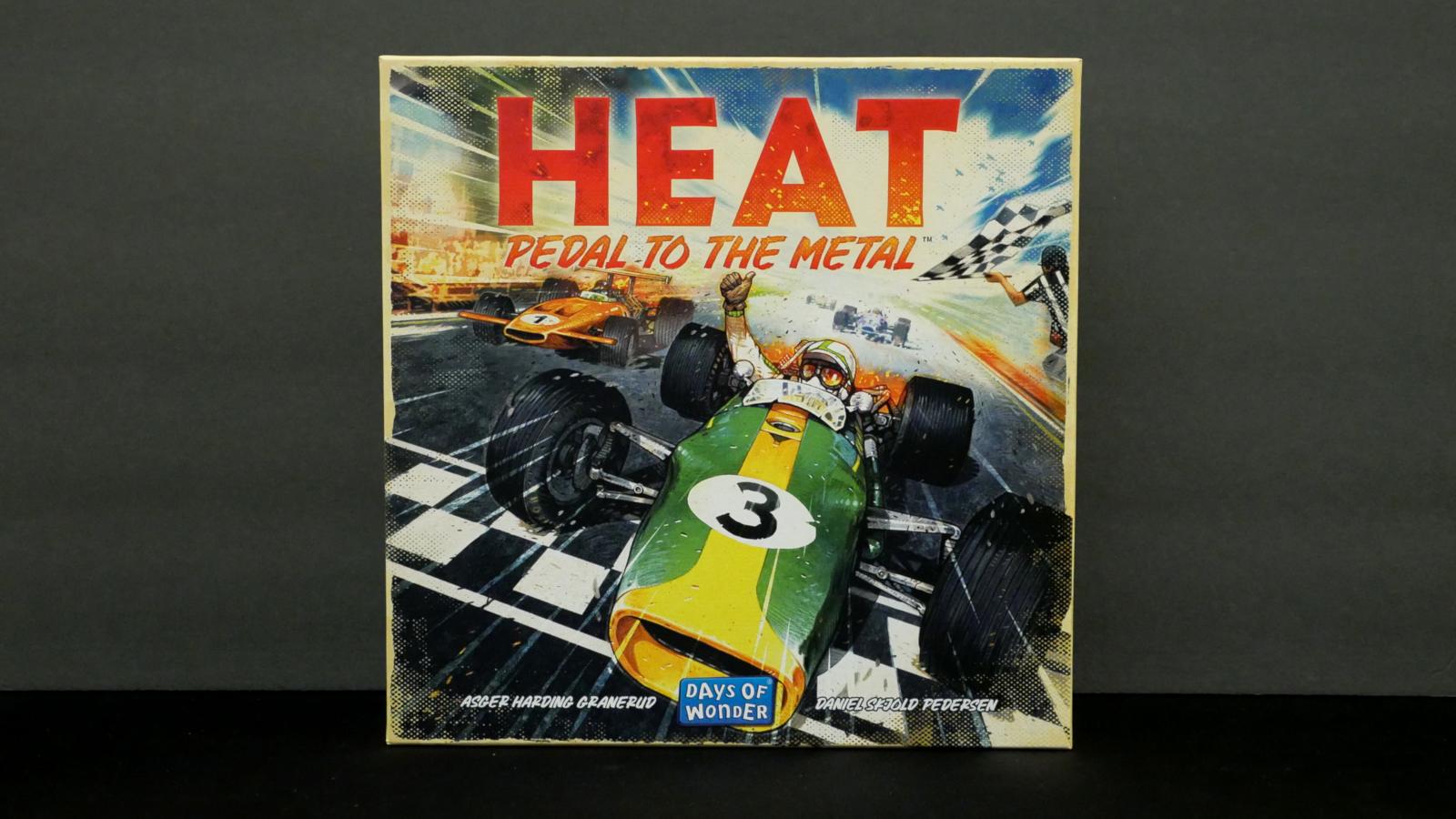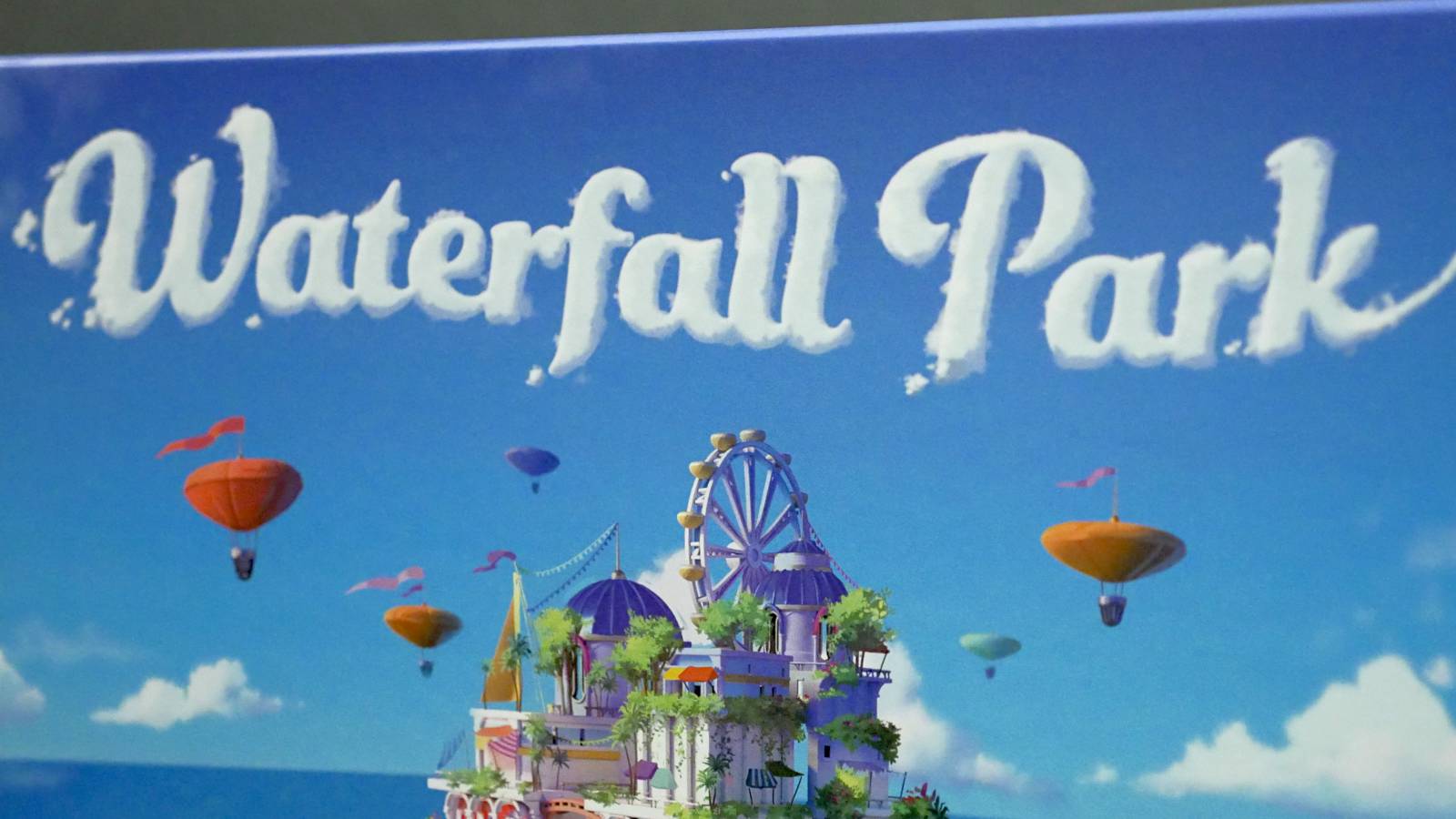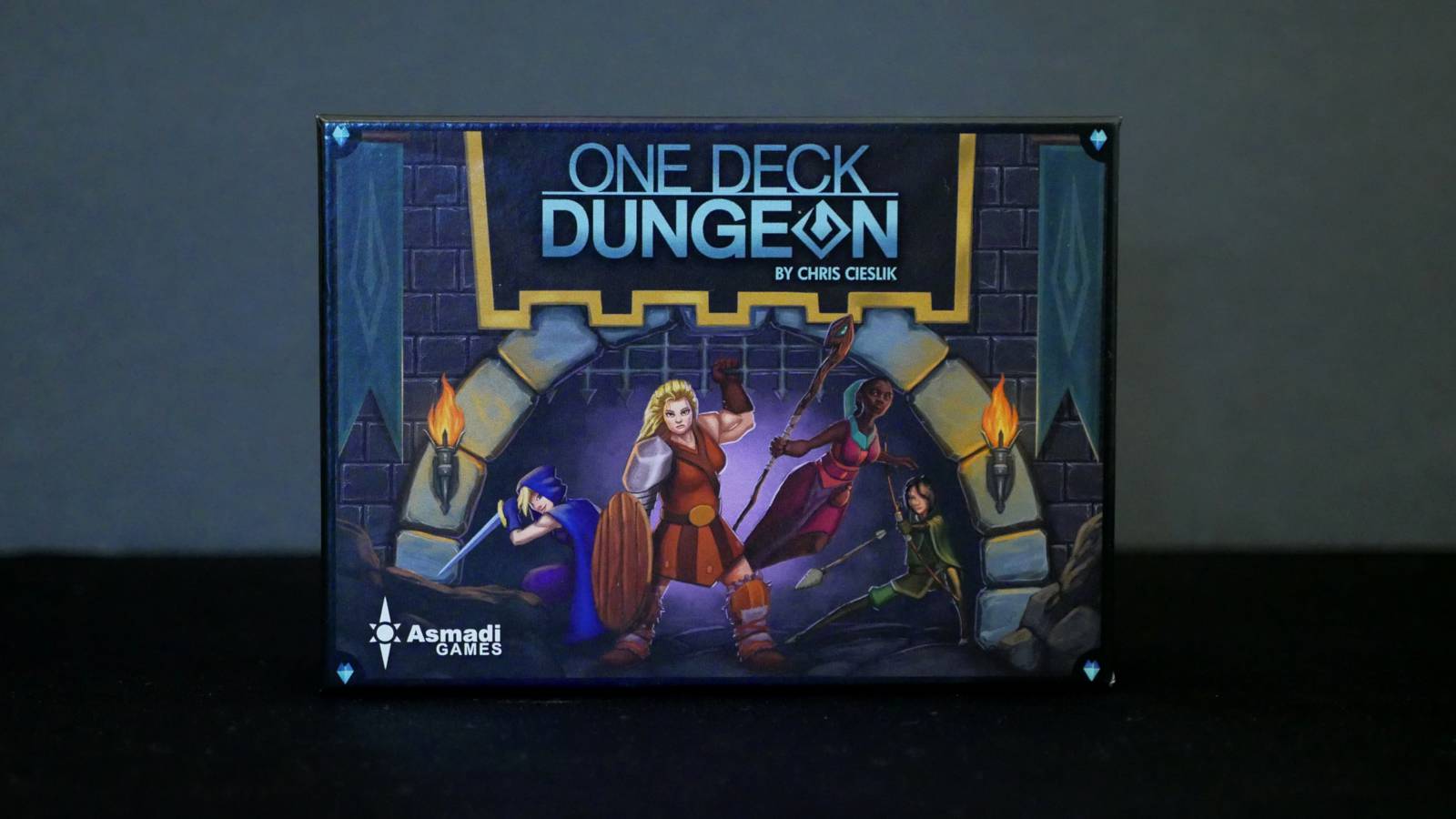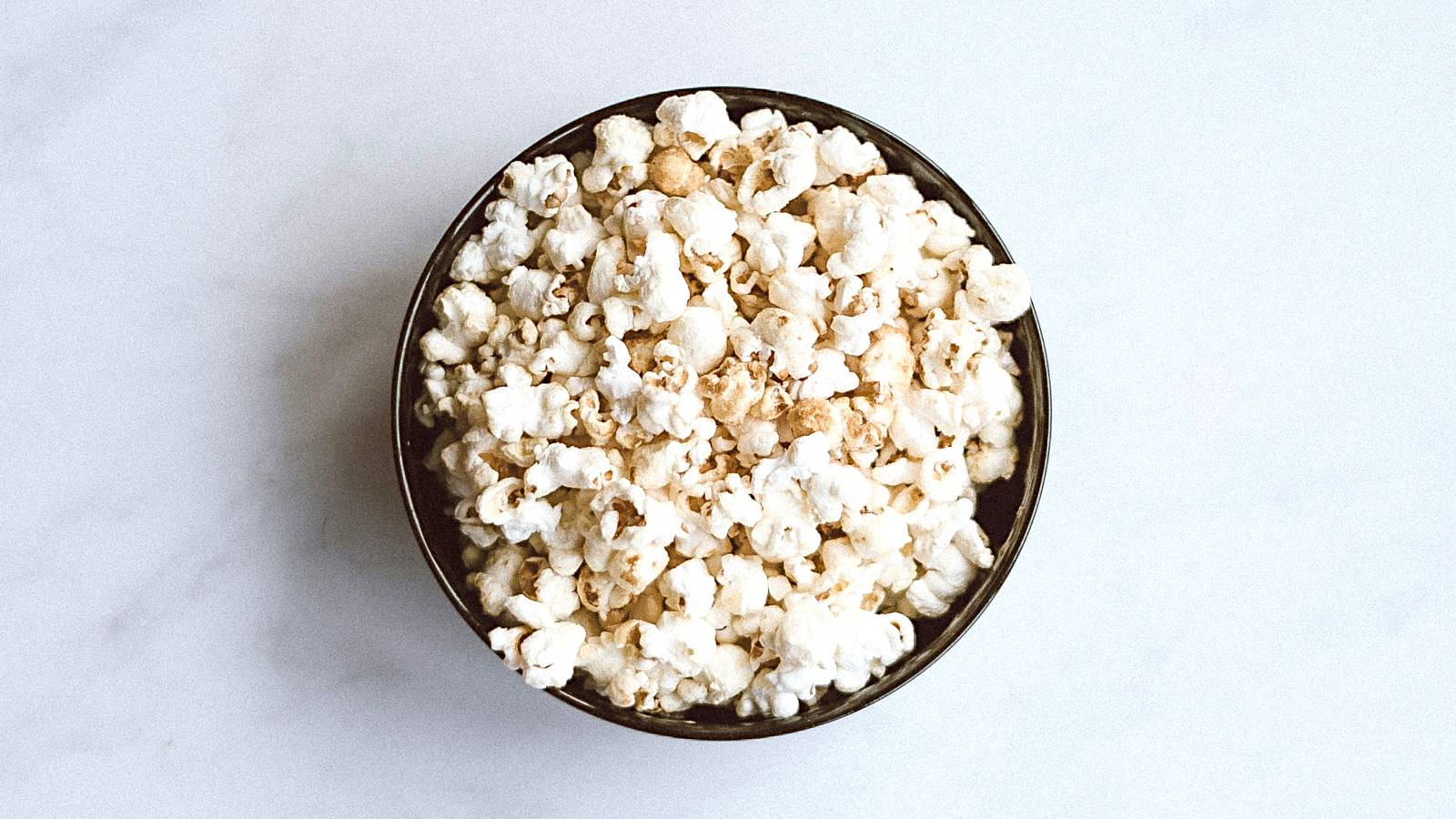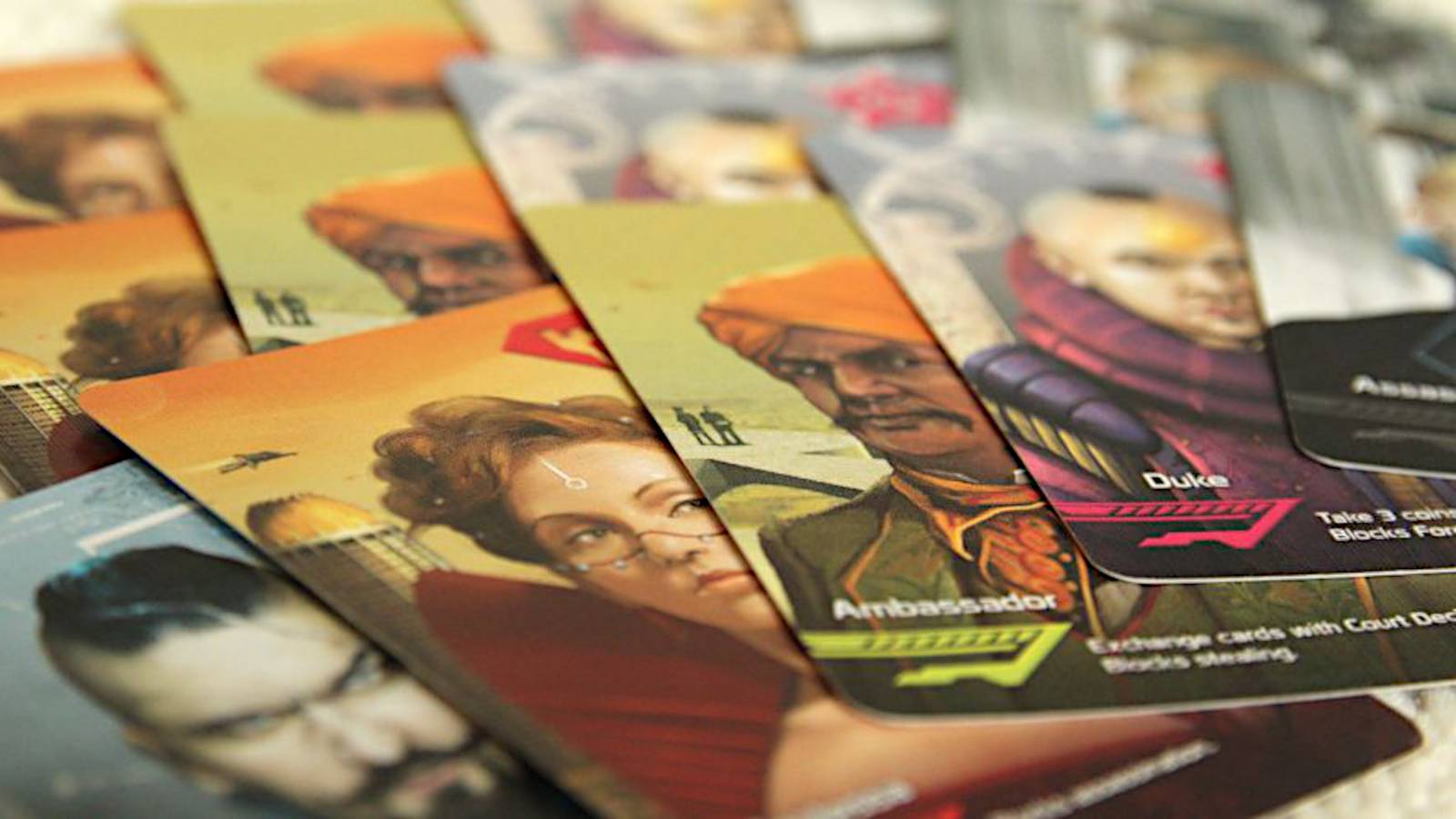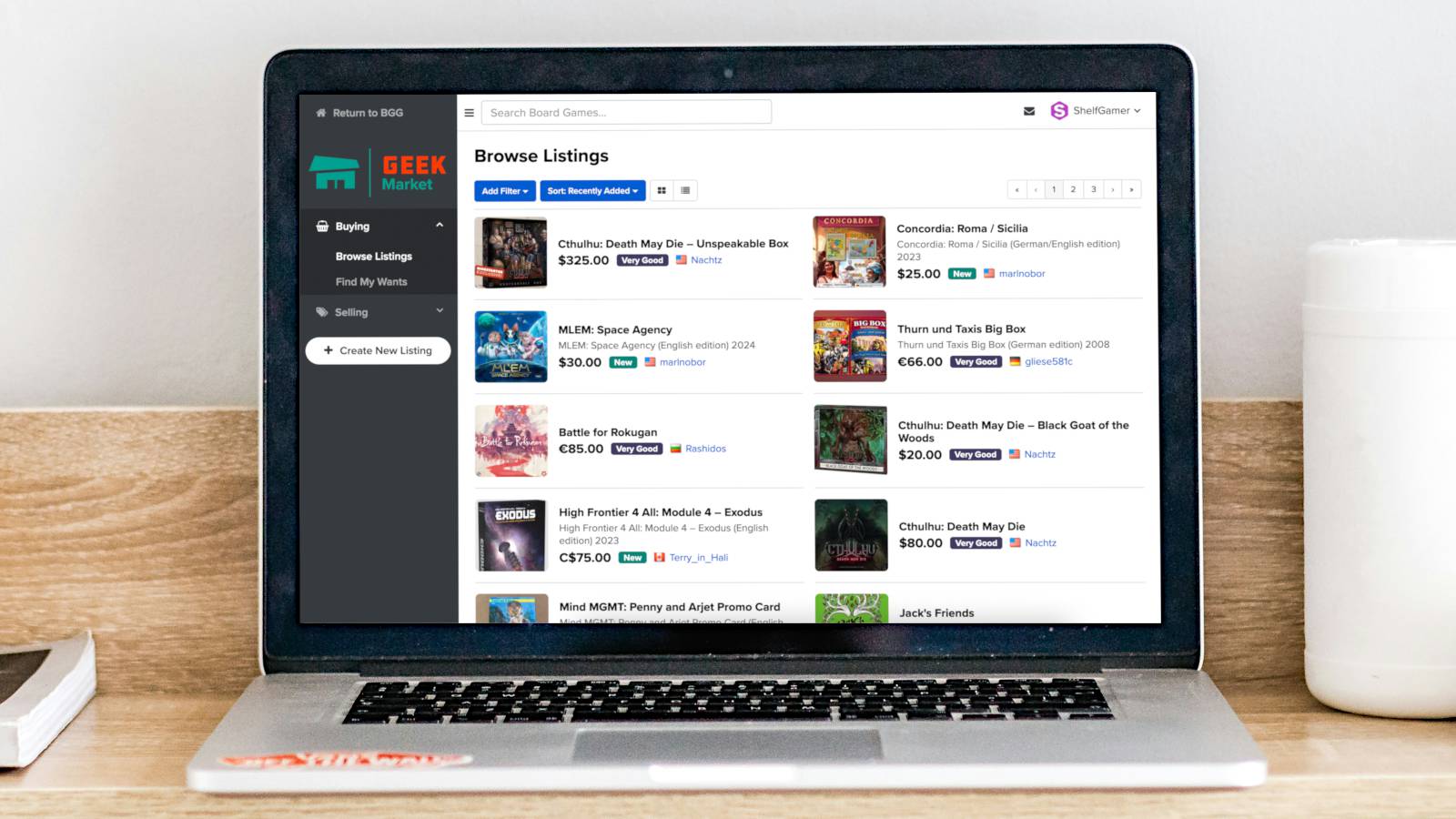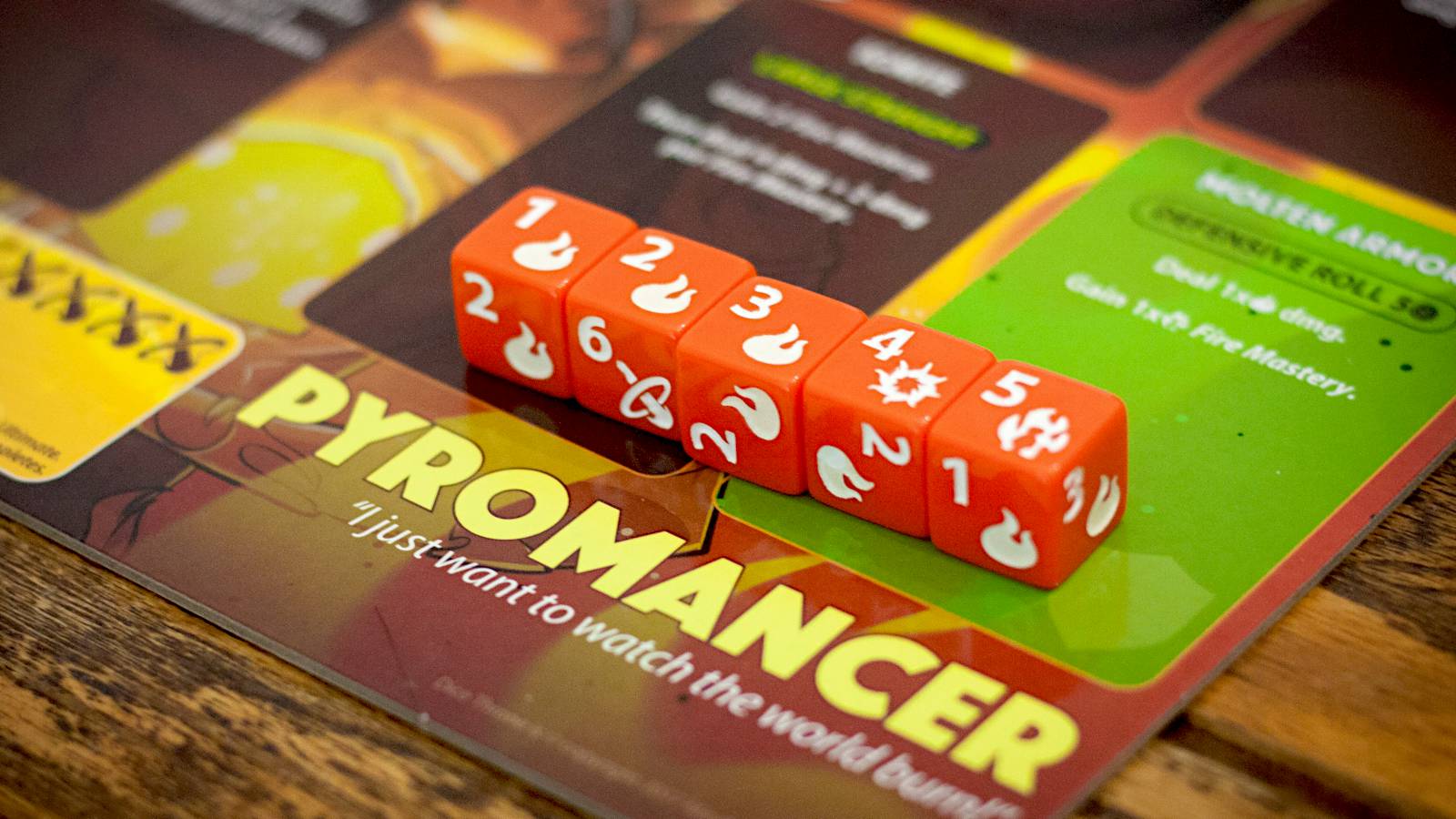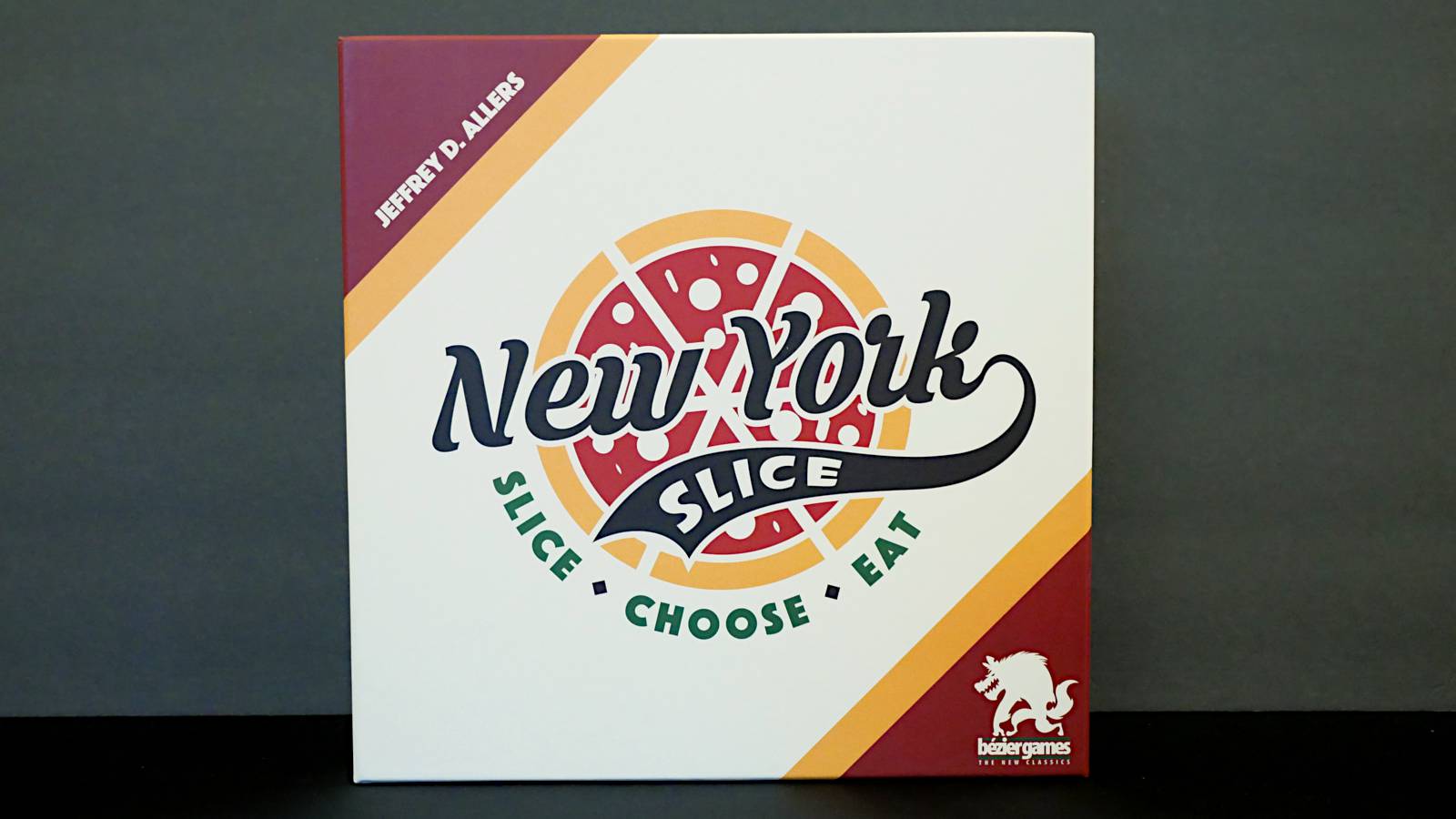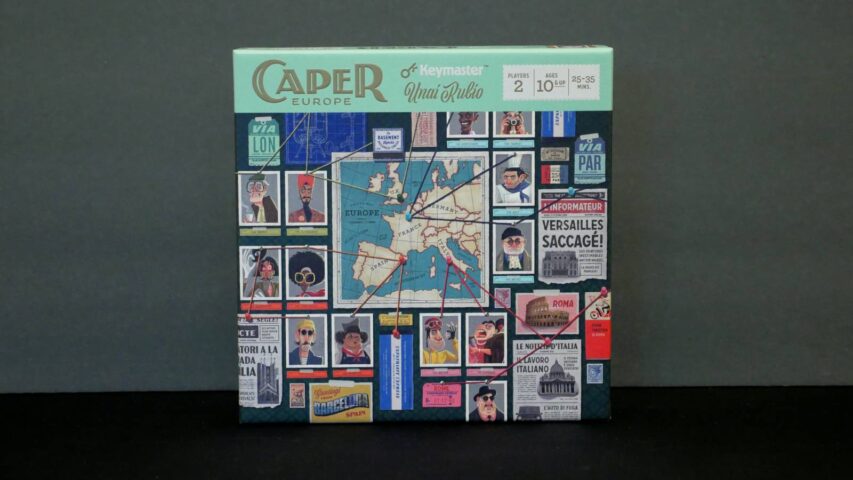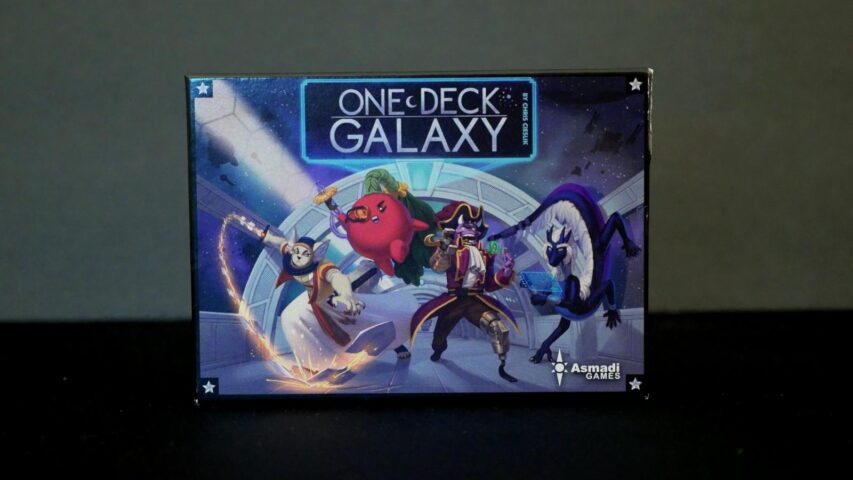Game: New York Slice
Release Year: 2017
Publisher: Bézier Games
Designer: Jeffrey D. Allers
Player Count: 2 to 6 players
Play Time: About 30 minutes
Rules Complexity: Simple
I've seen all kinds of games with standout productions—Dice Throne, Viticulture, Everdell, Caper: Europe—but I've never purchased a game solely for its production. Well, with one exception: New York Slice.
A reimplementation of the 2008 game Piece o' Cake, New York Slice takes the cake theme of its predecessor and slaps a pizza over it. The box looks—and opens!—like a pizza box. The rulebook is formatted like a pizzeria menu. The game itself consists of pizza slices with a variety of toppings across them.
Seriously, it looks fantastic.
But how is the gameplay? Is it any fun? Does it have lasting appeal? Is it worth taking up a spot in your board game collection, or is it just a visual gimmick and conversation starter? Here's everything you need to know about New York Slice and whether it holds up after all these years.
This review is based on my own personal copy of New York Slice, which I bought on sale from Amazon. Not a free review copy.
Overview
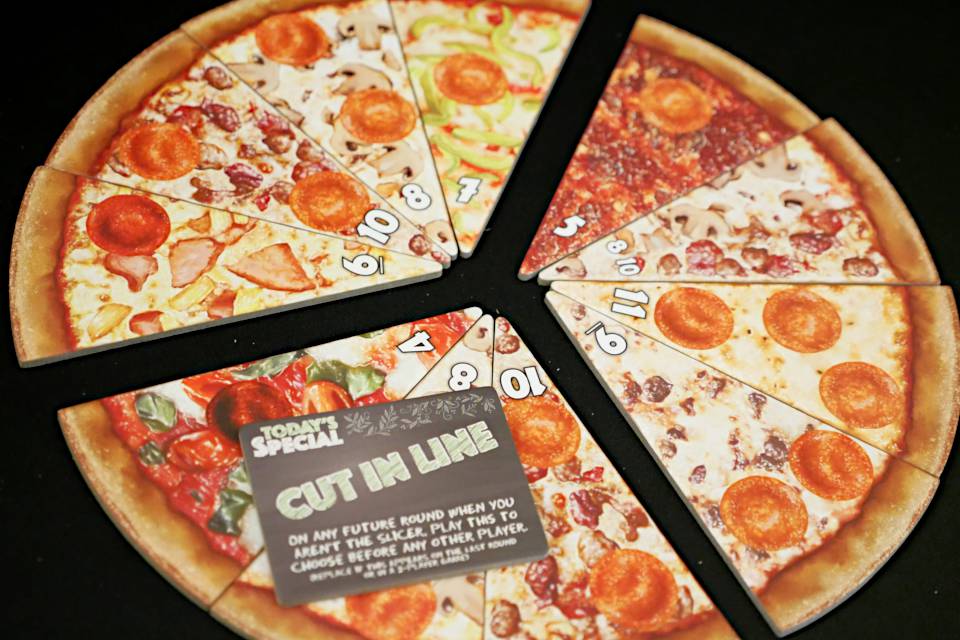
Have you ever fought over the last remaining chunk of, say, pie? Perhaps with a sibling? You both really want it, so you both compromise—you'll split it. But how do you ensure fairness in the split? What if they get the bigger piece?
Well, one nifty trick is to use the "I cut, you choose" technique: one person splits the pie into two, then the other person chooses which piece they want. This prevents the splitter from making an unfair split, else they'd get stuck with the lesser half.
That's basically the entire game of New York Slice, except here you're dividing an 11-slice pizza into different groupings (equal to the number of players) and then taking turns to choose which grouping you want to take.
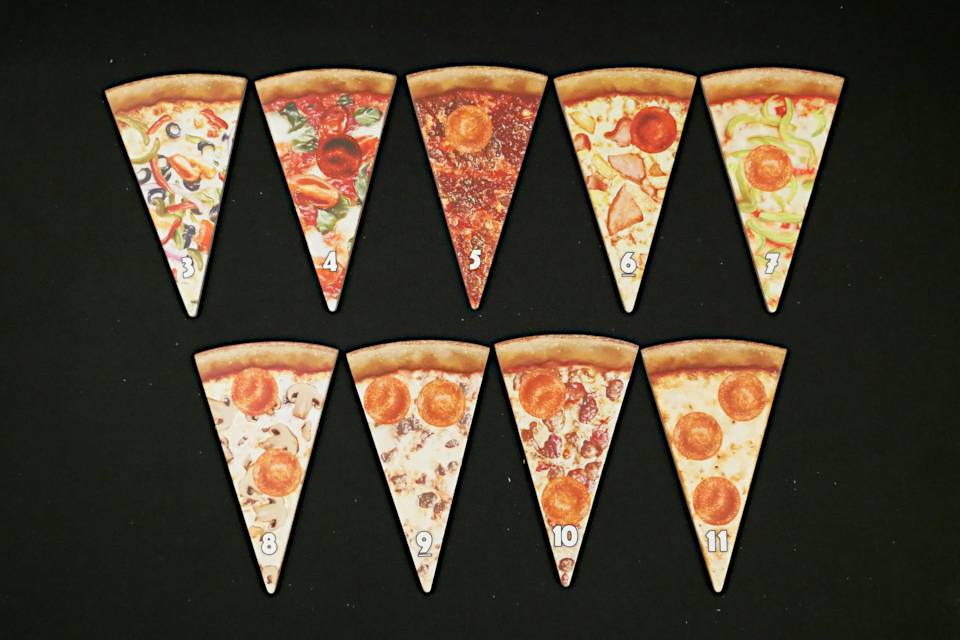
Each slice of pizza is of a different type (e.g., mushroom, sausage, BBQ chicken). You score points by collecting the majority of a given type of pizza. The rarer the slice, the fewer they're worth; if you can snag the majority slices of a popular pizza type, you'll score lots of points at the end.
That's not all. Some of the slices—regardless of type—also have anchovies on them. Every anchovy you've collected by the end of the game will cost you negative points, so you're generally trying to avoid those slices.
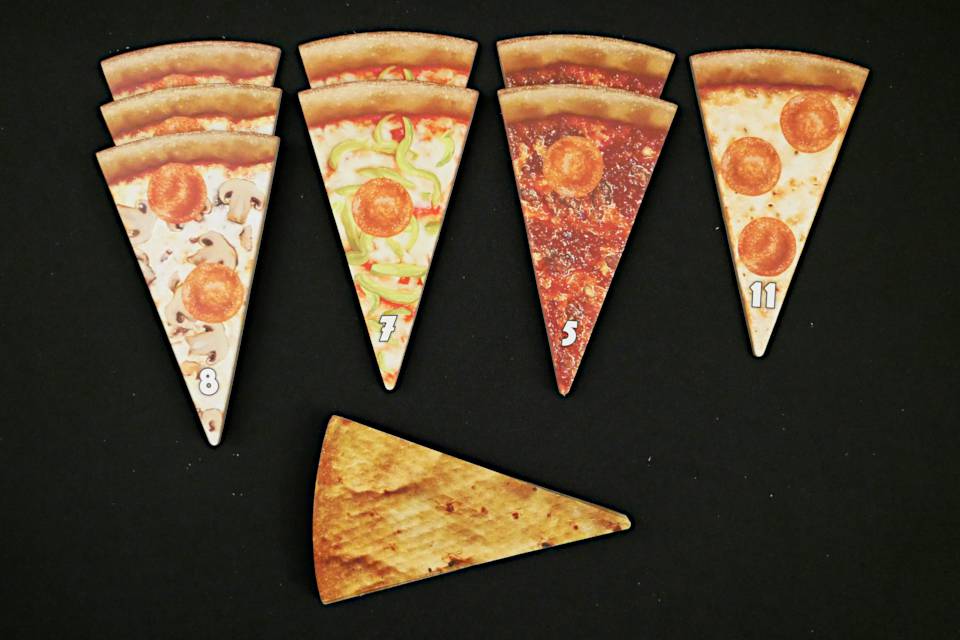
But there's a twist: when you choose a grouping and take all of those slices, you can choose to "eat" some, all, or none of them. Eaten slices don't count towards your majorities at the end, but it's a good way to get rid of anchovy slices.
The game ends when all six pizzas have been divided and chosen. Then, whoever has the most points (majorities minus anchovies) wins.
Setup and Table Footprint
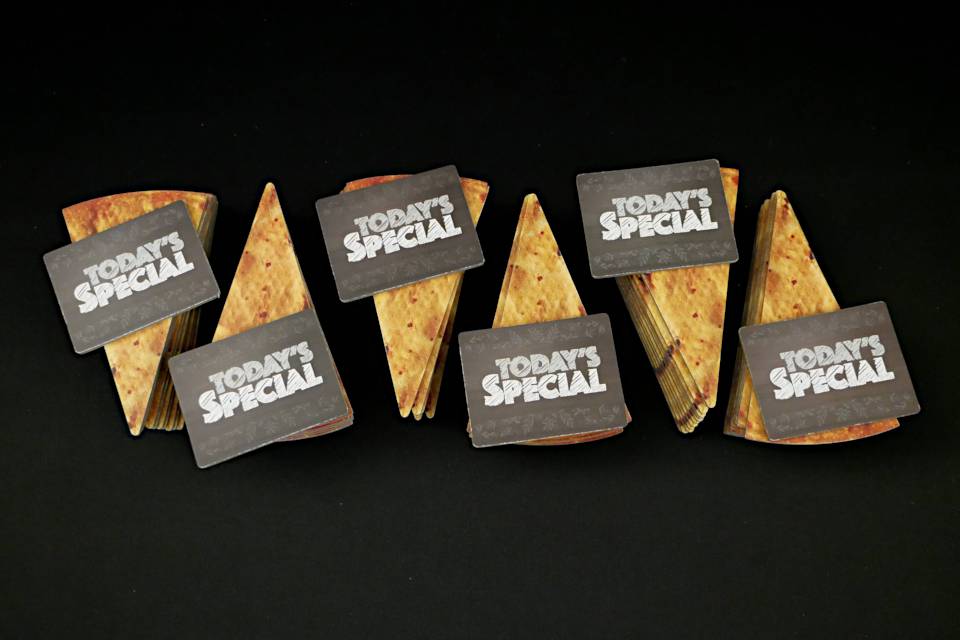
New York Slice is a bit of a chore to set up for one single reason: there are 69 cardboard pizza slices and you need to shuffle them. I don't know about you, but I hate shuffling big cardboard components. It's not like cards.
Once shuffled, the pizza slices need to be randomly stacked into six piles of 11 slices each. Each stack represents one pizza that will later be divided.
Besides that, there isn't much else to setup. You'll need to shuffle the Today's Special cardboard markers (easier but still not easy) and assign one at random to each stack. Once that's done, you're ready to play. All in all, about 5 to 8 minutes.
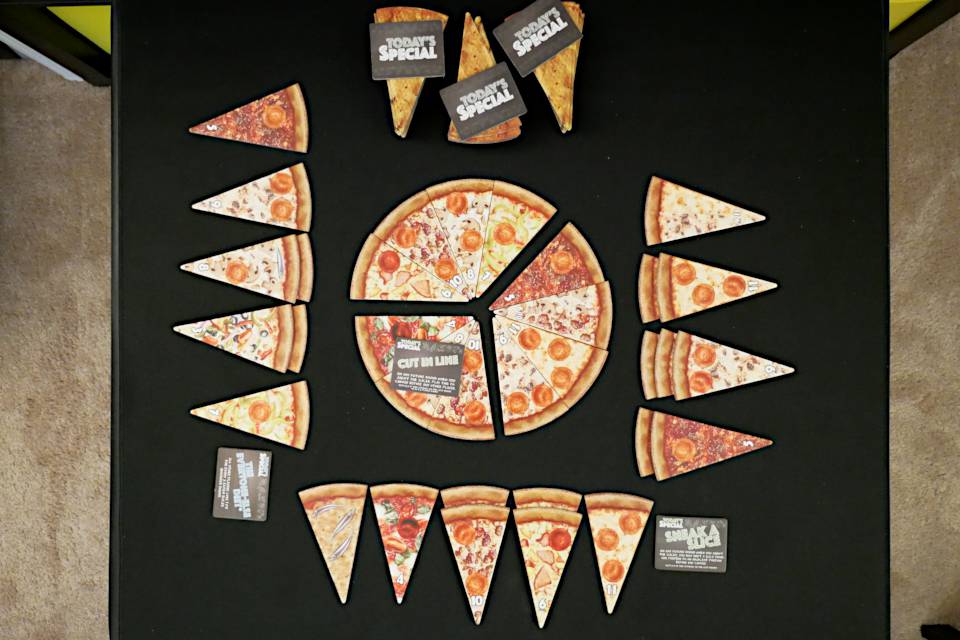
As for table space requirements, New York Slice is... reasonable!
When arranged into a full pizza, the slices don't take up that much space. Slicing a pizza also doesn't need much room. This part is fine.
But as players collect pizza slices, those slices need to be displayed in front of them—and not just displayed, but organized by pizza type. This can take up more room than you'd expect, especially when a player doesn't eat many slices.
Could you play on a standard 3-ft-by-3-ft card table? Probably, especially with 2 or 3 players. But if you're playing with 4, 5, or 6 players, you'll probably want a bigger surface with enough room for comfortable set collection.
Learning Curve
New York Slice is a straightforward game. Some might even put it next to other quintessential family board games for its ease of play, reasonable game duration, phenomenal production, and universally appealing theme.
Everyone can immediately grasp the idea of splitting a pizza equally. The idea of set collection is also simple and shouldn't be foreign to anyone who's played card games. Plus, anchovies are bad! That's a well-known trope when it comes to pizza toppings. Overall, the basic concept is extremely teachable.
However, some people might have a little trouble wrapping their heads around the fact that each slice must either be eaten or collected. It isn't necessarily complex—so most gamers will get it right away—but it's an unusual rule for anyone who doesn't normally play board games.
That said, as long as you're clear in the teach, New York Slice should go over well with almost anyone. It's great for kids, for families, and for gamers.
Game Experience
Decision Space
In New York Slice, you don't make many decisions, which means each decision that you do make has crucial influence over whether you can win or not.
As the slicer, you're making one huge decision: how are you going to divide the groupings? You can consider several different factors, but the result is a pizza that's split up and ready to be collected.
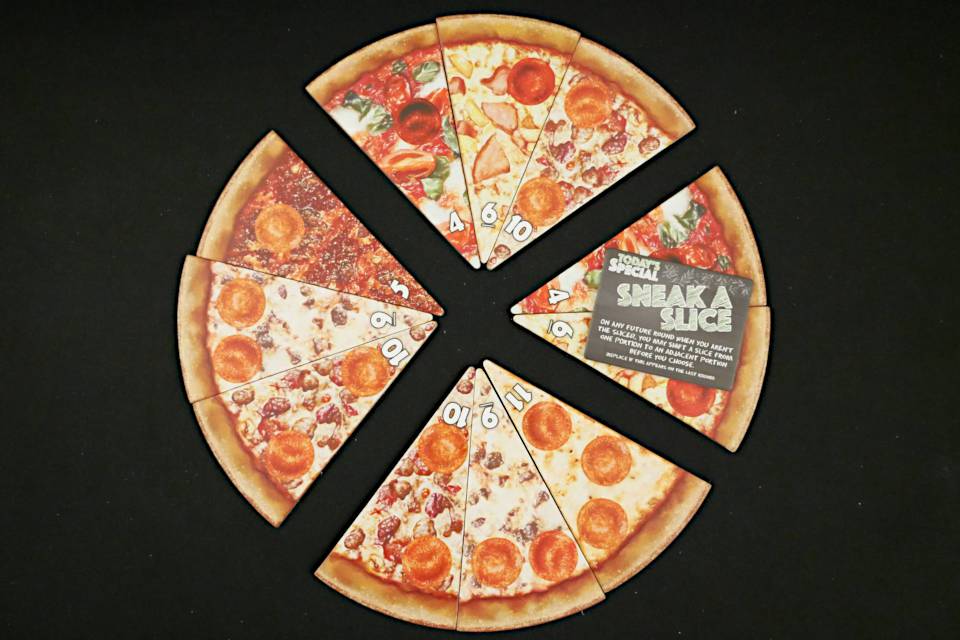
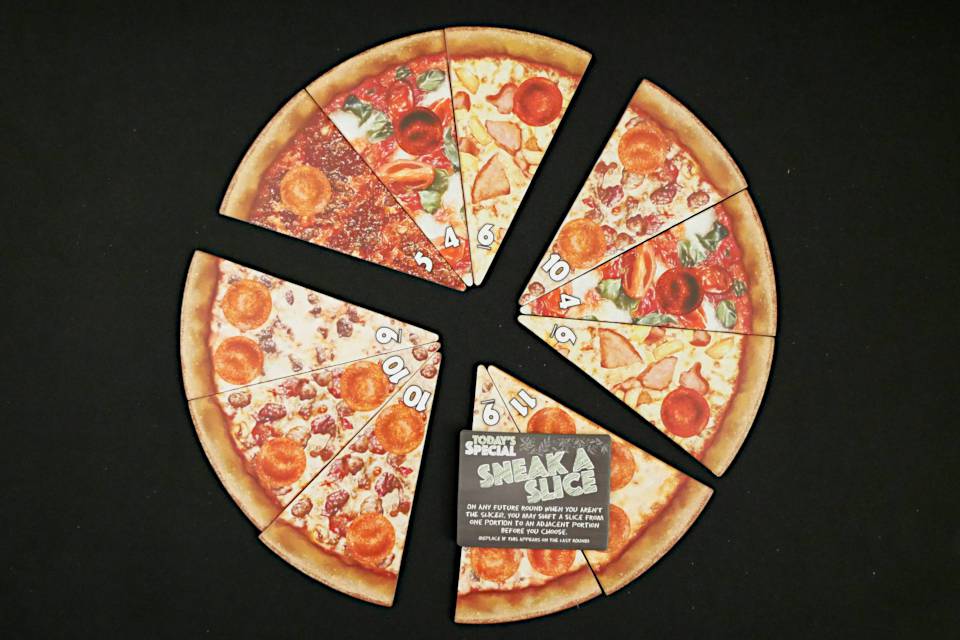
The most important consideration here is that all of the groupings need to be similarly valuable. As the slicer, you're the last one to collect—so if you're most likely going to be left with the worst grouping. If you make one that's obviously bad, you're just punishing yourself.
But when it comes to valuing the groupings, you have to consider what the other players have already collected. Bob might be drawn to the mushroom slices in one grouping while Charlie has no desire for that grouping at all. Every slice has a different relative value depending on what players are going for.
So, as the slicer, you're actually trying to split the pizza in such a way that each grouping appeals to a particular player, enticing them to take the slices you don't want so that you can collect the slices you do want.
If you aren't the slicer, you have a different but equally important decision: which grouping are you going to take? Your goal is to take the slices that will earn you the most points or set you up to earn more points later on.
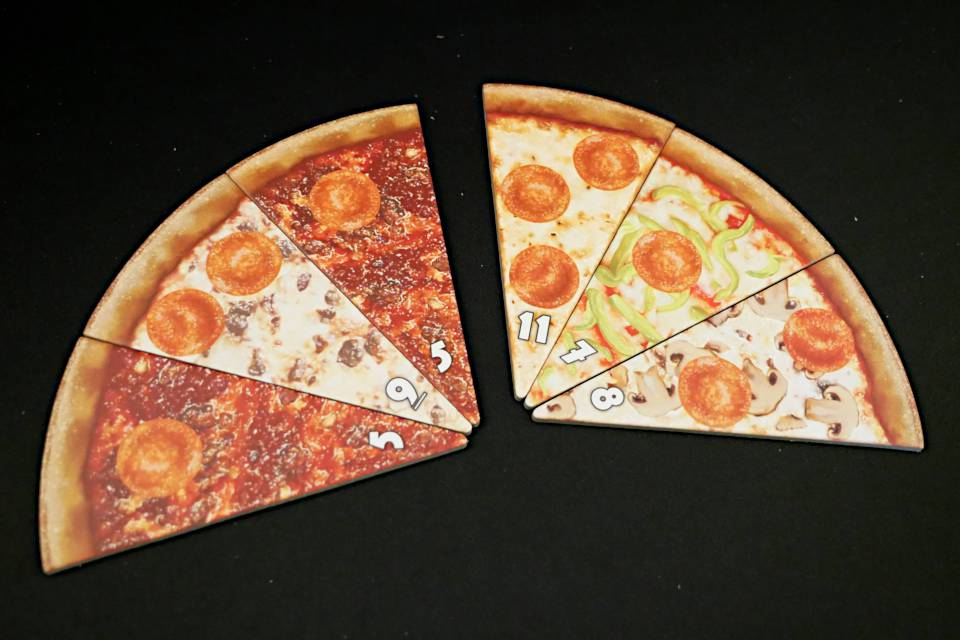
But once you've collected a grouping, you then need to make a mini-decision for each slice in the grouping: are you going to keep it or are you going to eat it? And it's not always as simple as eating any slice with anchovies while keeping the rest.
Sure, most of the time you'll probably eat the anchovies. But you might decide to keep a mushroom slice with anchovies because you expect it to win you the mushroom majority, earning you more points than you'd lose from the anchovies.
And don't forget the Today's Specials, which grant special bonuses or abilities. For example, the "Sneak a Slice" ability lets you move a slice from one grouping to the adjacent grouping before you choose which grouping to take.
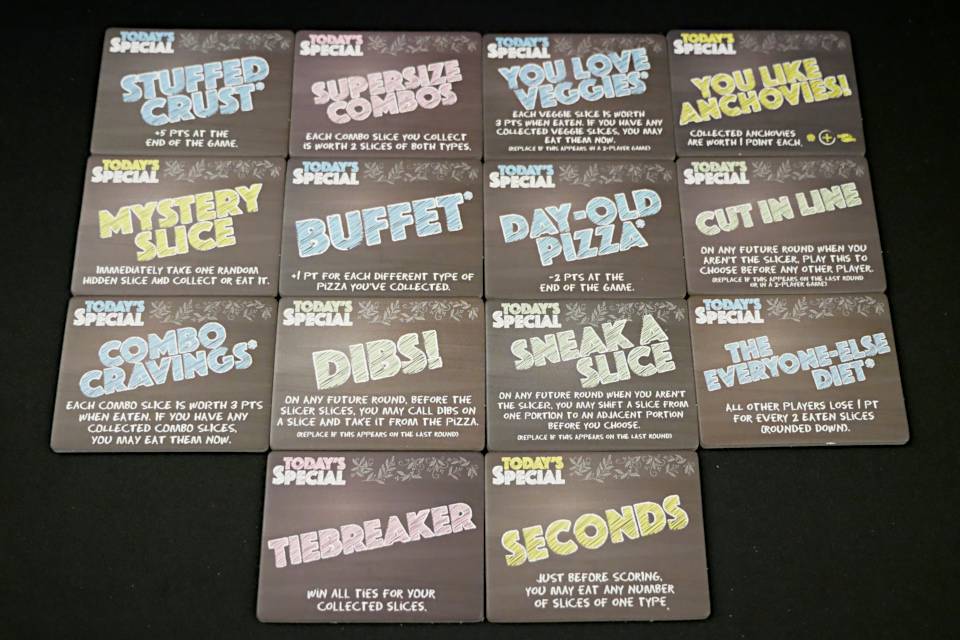
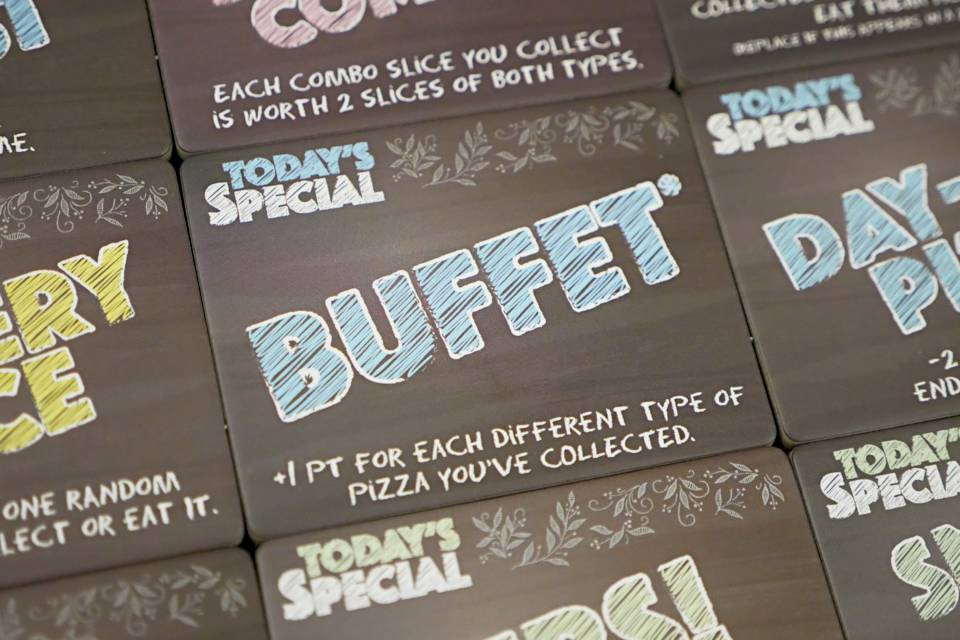
Timing is crucial here. They can only be used once, so you need to play them at the right time to maximize your gains. But there are only six rounds in New York Slice, so you can't hold on to them forever. Now? Later? Or never?
Some of the Today's Specials are passive, meaning you don't actually make any decisions on when to use them. For example, the "You Like Anchovies" bonus makes you gain points from collected anchovies instead of losing them. But these are still interesting because they force you to change your strategy and think differently about how you value certain groupings.
Luck Factor
I don't consider New York Slice to be a lucky game at all, but there is a bit of luck involved when you consider how each pizza's makeup is totally randomized.
Not only are you at the mercy of luck as far as which slices are available when it's your turn to slice, but the arrangement of slices is also random. I'm not saying that's a bad thing; it's what makes the decision-making interesting, so it's not a knock.
However, there is one element that can make or break any given game of New York Slice: player order matters a lot.
If you're sitting ahead of someone who isn't good at slicing equally or someone who makes a crucial mistake when valuing slices, you're at a serious advantage because you get first pick at the best grouping. Meanwhile, if you're skilled at slicing equally, the player after you doesn't have that same advantage—and you're liking to come out ahead of them over the course of six rounds.
Fun Factor
New York Slice is a pretty mellow affair. I wouldn't say it's "fun" at all. In fact, it feels like more of a thought experiment than an actual game.
Sure, you might have moments of laughter as someone makes a bad split. You might poke fun at someone while they're slicing, or you might beg them to slice in a way that's fairer to you. You might groan in displeasure as your turn comes around and you're stuck with a terrible set of slices.
But the actual decisions are mechanical, dry, and unexciting. (To be fair, I find the whole "I cut, you choose" mechanism to be boring as a whole, so take that into account as far as my opinion on fun factor goes.)
Player Interaction
New York Slice is weird because the entire game is about player interaction, but it doesn't feel like there's much interaction at all.
When you slice a pizza, you might consider each player's state and decide accordingly—but you aren't then assigning each grouping to the different players. As the slicer, your focus is on the pizza itself; any interaction with others is abstract. You're thinking about how they might draft your groupings, but that's it.
And when you aren't the slicer, you aren't dealing or negotiating or trading with the slicer. The pizza has already been sliced, so now you're just evaluating the groupings and deciding which one you want. It doesn't feel like you're interacting with the slicer at all; rather, you're interacting with the pizza.
Replayability
As I mentioned above, New York Slice feels more like a thought experiment than an actual game. The decisions are "interesting," but there isn't much tension from round to round and it's hard to get invested in the results.
The production gimmicks are fantastic and it'll certain turn the heads of people who aren't plugged into board gaming culture. The thought experiment itself is also fun to try once or twice. But after you get over the novelty of New York Slice's production and concept, it loses much of its appeal.
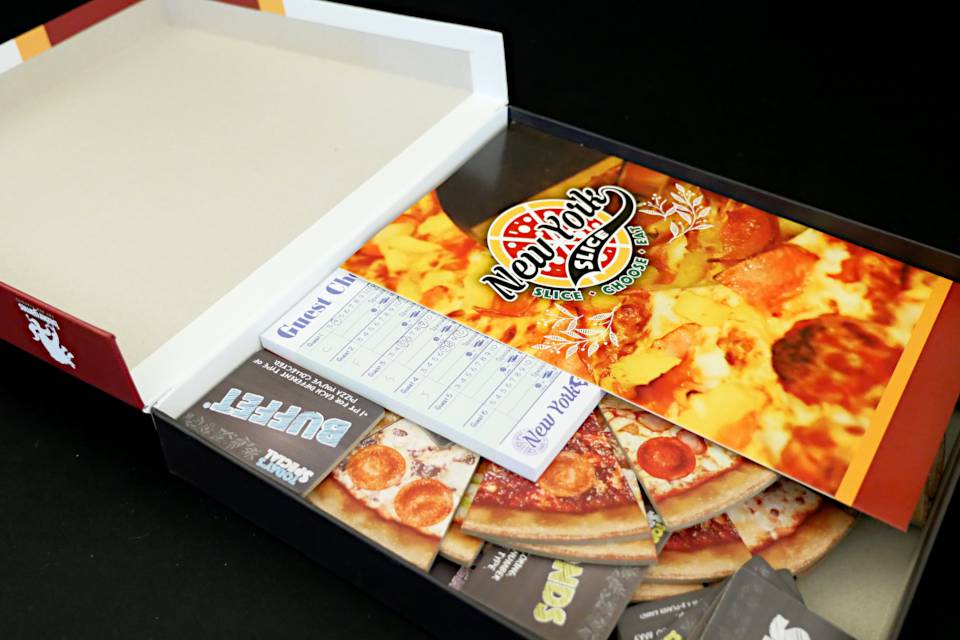
Now, I'll fully concede that some gamers will find this kind of thought experiment to be fascinating enough to repeat over and over—and with the right group of gamers who internalize the nuances, I can see this being really fun.
But I'd say only 1 or 2 out of every 5 players in any given gaming group will probably enjoy New York Slice enough to replay it regularly.
It's not a terrible experience, but I personally have no desire to pull it off the shelf again... except perhaps to show it to someone who's never played it before.
Production Quality
Like I said at the very start of this review, New York Slice is the only board game I've purchased solely based on the strength of its production. Something about it drew me in and compelled me to buy it.
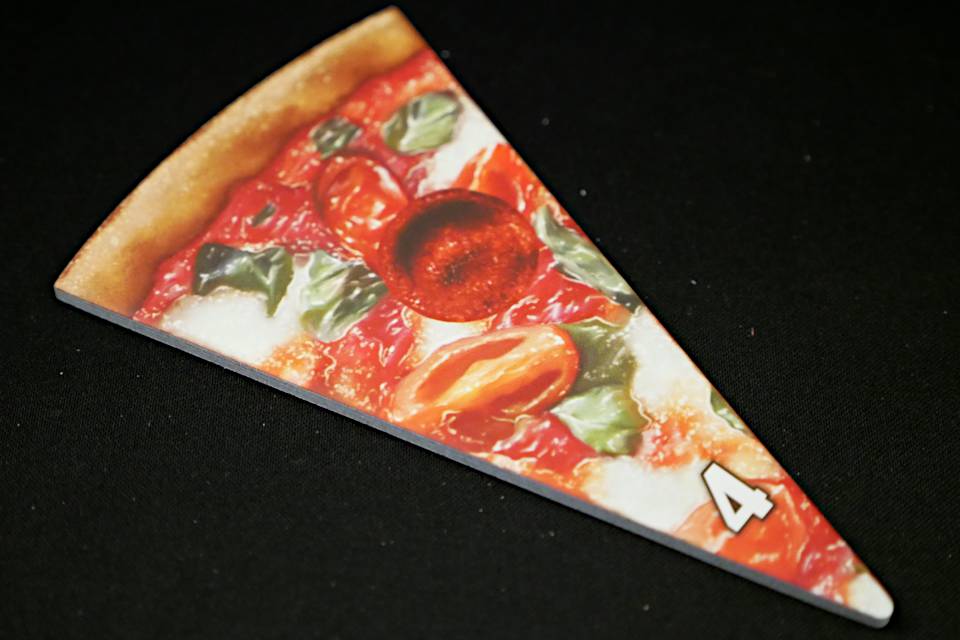
The pizza slices are great quality, but the artwork is meh. I love the chunky cardboard of the slices, which fit together to make perfect pizzas. It's quite satisfying to split and re-split and re-split again, shifting the slices around as you try to figure out the optimal divisions. And when you go to collect your slices, it just feels good.
My only complaint here is that the artwork goes for a photorealistic look, but doesn't nail it well enough to work. While it looks nice if you're just glancing at it, the slices get uglier the more you stare at them.
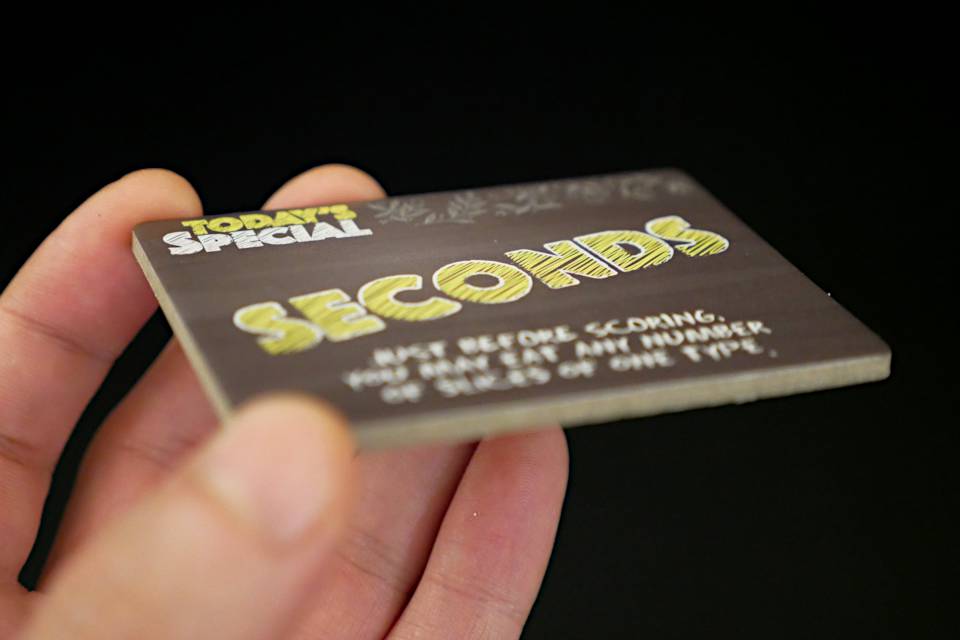
The Today's Special markers are great, too. I love the design of the Today's Special markers. They're the same thick cardboard as the slices, but these have a dark slate background color that represents a chalkboard, completing the real-life look of a pizzeria that has a Today's Special written up for the day. It's fun!
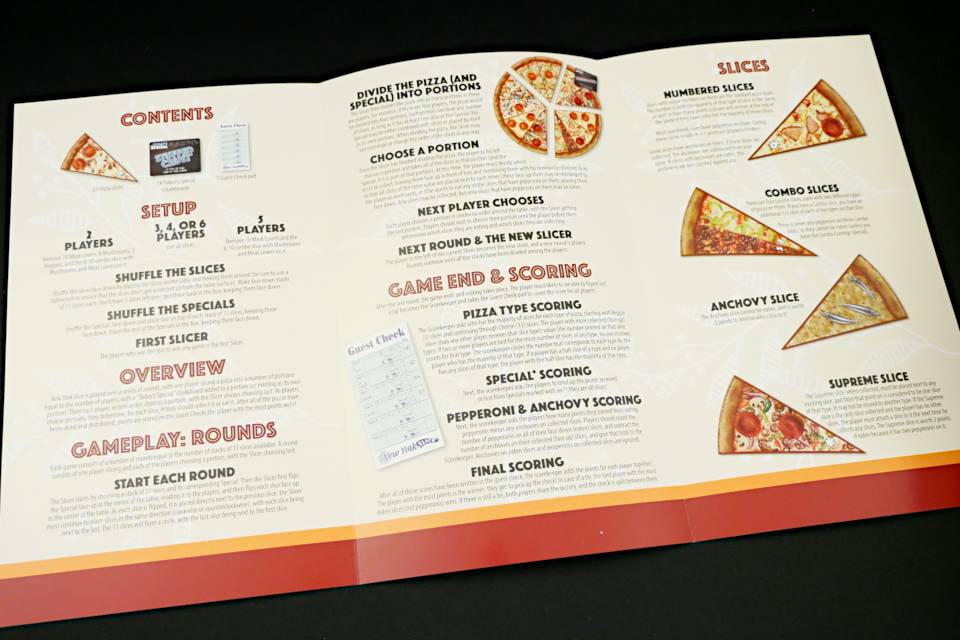
The box and rulebook are amazingly thematic. The box looks like it came from an actual New York pizza joint. The lid opens like an actual pizza box, and the rulebook is formatted like a real-life pizzeria menu. It's a gimmick, but it's a fun gimmick that brings out the smiles—and despite all that, the box is still very much a "normal" box that fits perfectly alongside other board game boxes on a shelf.
The Bottom Line
New York Slice
- Amazing production that will turn heads and draw interest
- Simple learning curve, great for kids and families
- Interesting concept that mimics a real-world scenario we've all been in
- Mechanical gameplay is more like a thought experiment than a game
- Lack of player interaction results in weak tension and pacing
- Too shallow to inspire repeat plays
Buy this game • Amazon • Game Nerdz • Noble Knight Games. If you buy using these links, I may earn a commission at no extra cost to you. It's one way to support me and this site. Thanks!


